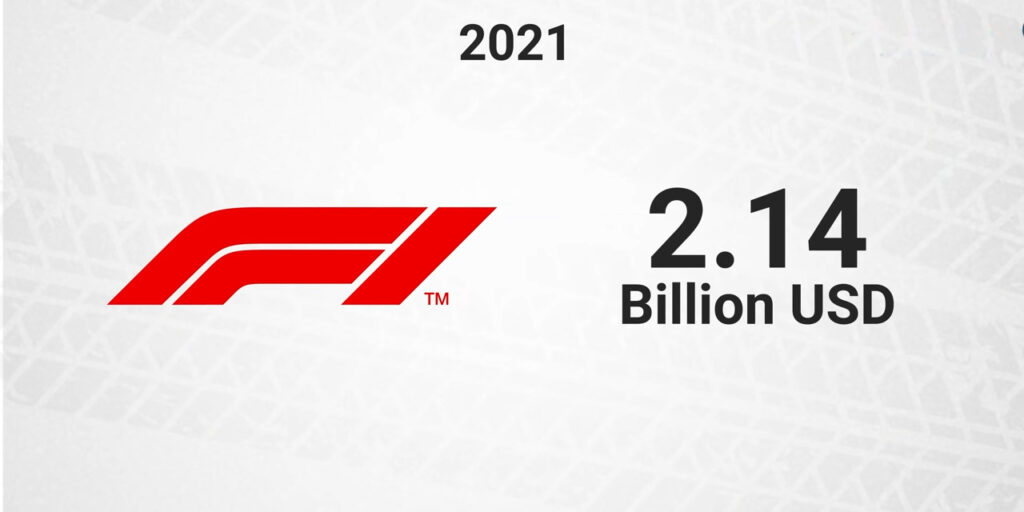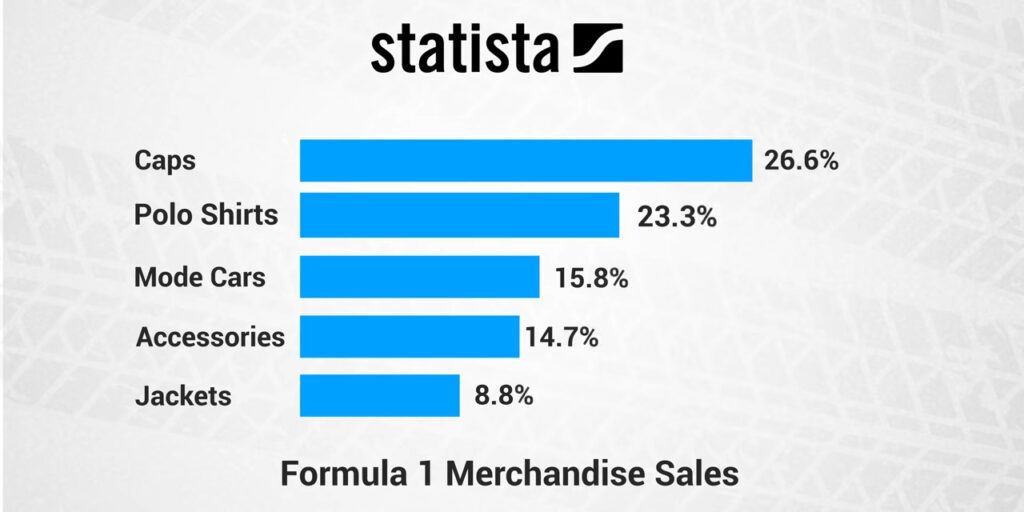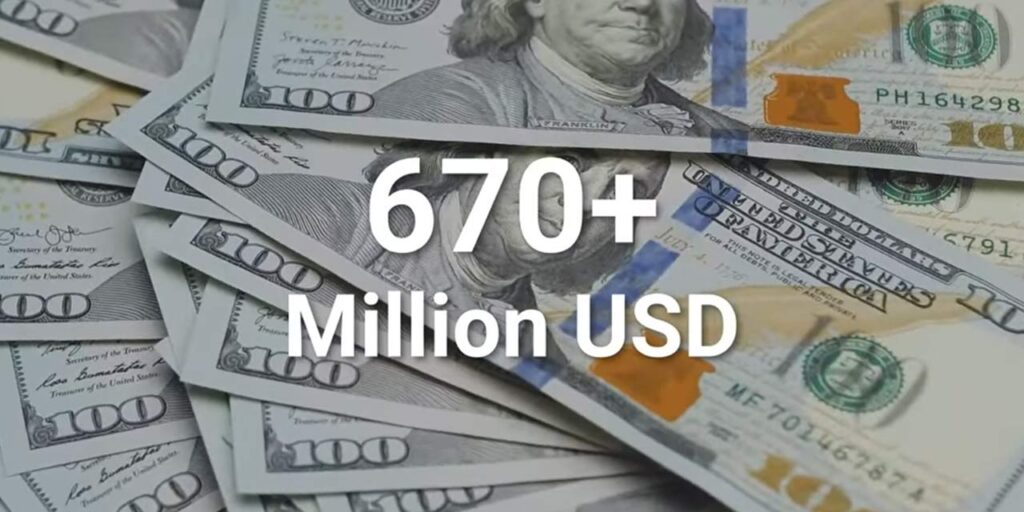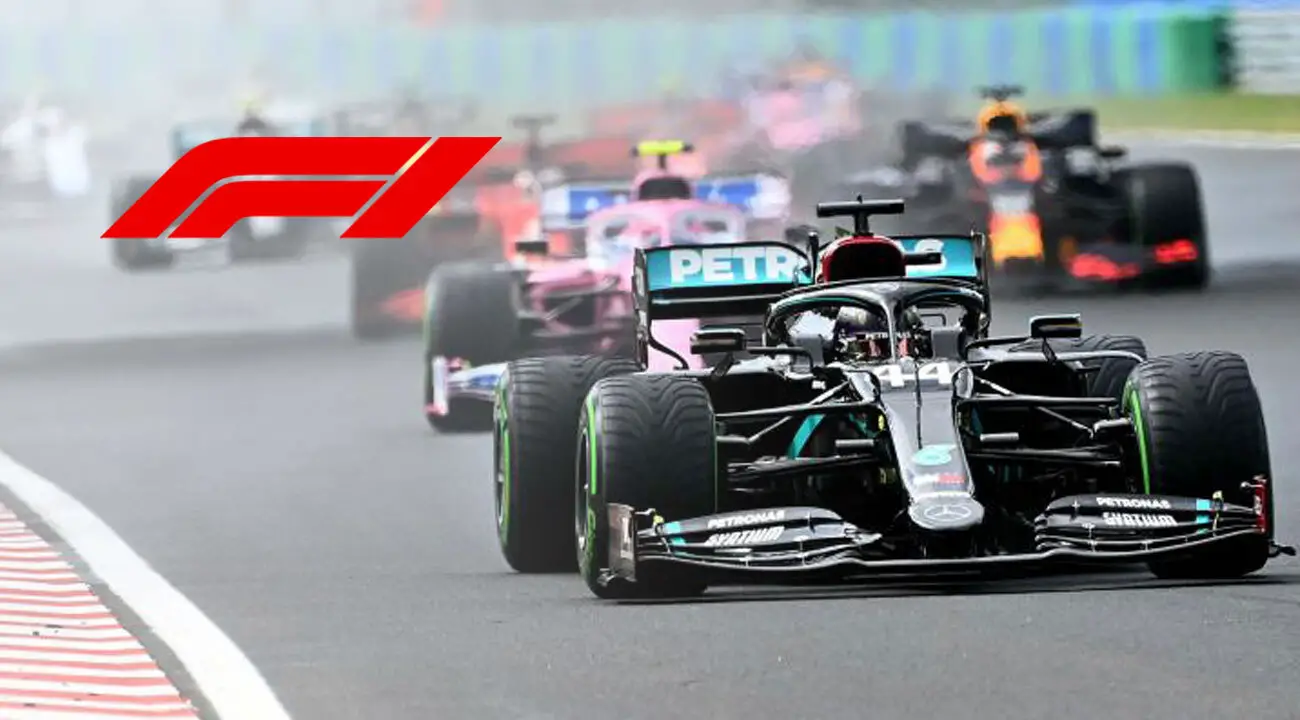Table of Contents
Formula 1 or F1 is the highest class single-seater automobile racing event authorized by Fédération Internationale de l’Automobile (FIA). The term “formula” in the name indicates a set of rules that each participating team must comply with. This competition is a series of racing events held every year on purpose-built circuits around the world. Each round is called a Grand Prix.
The Grand Prixes are held in different countries throughout the year, which is expressed as a single season of Formula 1. With a massive fan base of over 49.1m people on social media platforms, it’s one of the most renowned and followed events among the racing communities. After the UEFA champions league, F1 is the second highest-earning and paying sport globally. 2021 was a remarkable year for F1, where it racked up $2.14B in total.
Although F1 is making billions of dollars per year, F1 was never intended to be a money-making business. Since the beginning, it has always been a marketing opportunity for sponsors and teams. So, how does such a big and premium sports event generate revenue?

Overview Of Formula One
In the early 19th century, a lot of competitive races were taking place in Europe. The journey of Formula 1 began between the 1920s and 1930s. On September 1st, 1946, the first Grand Prix took place in Turin, Italy. It was the first race in the history of F1, which was held in accordance with the standardized F1 regulations set by FIA.
Later in 1950, the first F1 World Drivers Championship was held at Silverstone, England. Since then, there were various non-championship F1 races taking place all around the world along with the world championship series, until FIA canceled all the non-championship races in 1983 because the cost was too high for organizing them. Since then, F1 has only hosted Grand Prix races that count for the Drivers’ championship award and the Constructors’ championship award.
Till 2021, 72 F1 world championship seasons have been organized. According to the FIA concord agreement, ten teams with two cars each are permissible to take part in each championship competition. Each Grand Prix is named after the host country.
Sometimes Grand Prixes are held in different cities of a host country, then the Grand Prix is named after that city. The standard distance of each Grand Prix is 300 km or 190 miles, except Monaco Grand Prix, which is 260 km or 160 miles long.

Each F1 team spends a lot of money. For example, Marcedes spent $450m to win the constructors championship in 2020. Other teams like Red Bull, Ferrari, and Aston Martin aren’t far behind either. So, how is such a large sum of money being spent? Well, we are talking about designing, making, and racing the most advanced cars on Earth.
Each F1 team spends on average $20.62m for an F1 car and the champion racers like Lewis Hamilton earns $40m per season. Apart from these, teams also spend money on research and development, assembly, maintenance and management, team paychecks, and operational cost. Again, a few teams like Hass and Williams buy engines from companies like Ferrari and Mercedes.
How Does F1 Make Money?
Sponsorship
Formula 1 is one of the most expensive sports leagues in the world. It has raised around $30B in the past 15 years from sponsors. Currently, F1 has 13 official partners who pay a substantial amount of cash to make the event successful. According to Forbes, F1 received 44.7% of their total earnings from team sponsors in 2021. Each team can hold upto 25 sponsors who pay around 80% of their total earnings.
In return, these sponsors get to see their names on F1 cars and driver outfits. For example, the Red Bull racing team has recently signed an agreement of $500m with tech firm Oracle as they will be the title sponsor for the Red Bull racing team till 2025. Even a small promotional logo placement costs $1.2m – $3.5m to a minor sponsor.

Prize Money
Each of the teams participating in the F1 Race receives cash prizes from F1 Management. In 2020, Marcedes received $61m for winning the championship title where Williams received $13m even though they finished last. The Constructor championship prize money splits in two sections where one goes to the teams and another goes to F1 shareholders. There are a few other means by which all participating teams receive a share of the prize money.
Merchandise
A huge portion of F1’s revenue comes from the sale of merchandise. Every team sells various items like t-shirts, caps, tents, badges, sweatshirts, padded jackets, hoodies, etc., to their fans around the world. According to Statista, Formula 1 caps are the highest-selling merchandise which accounted for 26.6% of the total merchandise revenue. Then comes polo shirts which is the second most selling item with a 23.3% share in this list. These sales are solely based on team popularity among fans.

Media Rights
F1 makes most of its money by selling broadcasting rights. Also, It’s the primary source of funds which mainly helps to run the operation of the sport. According to F1 officials, around 1.55 billion people have enjoyed the entire formula 1 competition of 2021 which is 4% higher than the previous season.
No single media company holds the full broadcasting rights to this worldwide famous racing event. Different sports media agencies in different regions carry F1’s broadcasting rights, such as – Foxtel Group in Australia, Sky Sports in the UK, Star India in India, ESPN in the USA, etc.
Ticket Selling
Another revenue-generating source of F1 is ticket selling. According to Formula One officials, the ticket price varies on each Grand Prix but it remains somewhere between $120 and $500 on average. In 2020, F1 made more than $670 million through ticket sales.











Leave a Comment